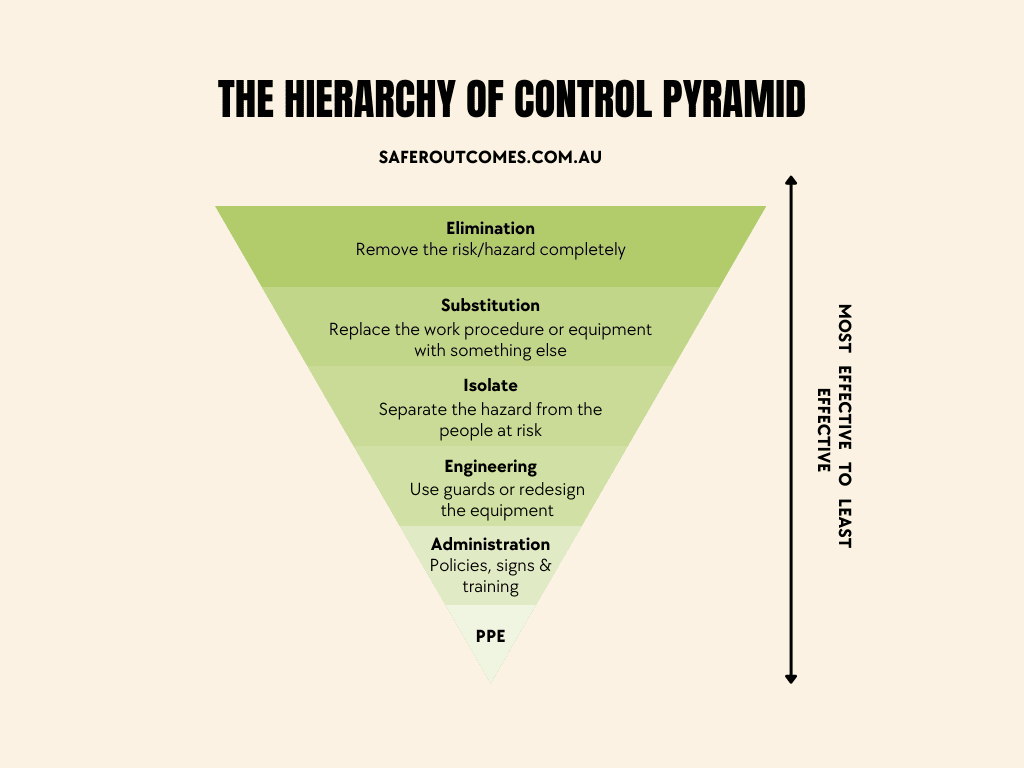As a business owner, one of the most critical aspects of ensuring the wellbeing and productivity of your employees is maintaining a safe work environment. While many workplace hazards are visible and easily identifiable, eye injury hazards are often overlooked until it’s too late. Each day, thousands of workers around the world suffer job-related eye injuries requiring medical treatment. In addition to the human impact, eye injuries in the workplace cost businesses hundreds of millions of dollars in lost productivity, medical bills, and workers’ compensation claims.
The good news is that many workplace eye injuries are preventable. By providing employees with the proper eye protection gear, regularly assessing and mitigating eye hazards in your workplace, and emphasizing the importance of good eye hygiene and safe work habits, you can reduce the risk of eye injuries and improve the overall safety of your workplace. In this article, we’ll explore common eye hazards in the workplace, what you can do to protect your employees’ eyesight, and why eye safety should be a top priority for all small businesses.
By taking a proactive approach to protecting your employees’ eyesight, you can help prevent workplace injuries, improve employee morale, and lower costs associated with workers’ compensation claims and lost productivity. Let’s get started on creating a safer workplace for everyone.

What are some common eye hazards in the workplace?
The most common eye hazards in the workplace are foreign objects, improper lighting, and excessive glare. Foreign objects like dust particles and other small pieces of debris can easily become lodged in an eye if they’re not properly shielded, while harsh lighting and excessively bright screens can cause eyestrain over time. Glare from external sources, such as natural sunlight or bright lights from machinery, can also be damaging to the eyes.
In addition to these more common hazards, there are several other potential sources of eye injuries in the workplace. These include hazardous chemicals and materials which can splash into the eyes and cause irritation or burns, lasers used during certain types of manufacturing processes, welding flashes caused by sparks, and airborne particles created during the course of certain activities.
What risks do workers with eye injuries face?
Eye injuries can have serious consequences for workers. Depending on the severity of the injury, a worker may experience temporary or permanent vision impairment, as well as pain and discomfort. In some cases, an eye injury can lead to blindness. Workers with preexisting vision conditions such as nearsightedness or astigmatism also face an increased risk of eye injury due to the effects of their condition.
If a worker loses their sight in one eye, they may also be at risk of developing a vision condition known as anisometropia. This can occur when one eye is not able to focus light properly due to a difference in the strength of the lenses in each eye. In extreme cases, this can lead to double vision and other serious vision impairments.
What industries are workers more likely to be exposed to eye injuries?
Certain industries and occupations carry a higher risk of eye injury due to the type of work performed. These include industrial workers, welders, healthcare professionals, construction workers, painters and other tradespeople working with hazardous chemicals or materials. Farmworkers are also at an increased risk due to exposure to dust and debris when operating machinery or performing manual labor.
However, anyone can be at risk of an eye injury in the workplace, regardless of industry or job title. That’s why it’s important for employers to assess any potential eye hazards and provide employees with the proper safety equipment and training to protect their eyesight.

Eye injuries in construction
Construction workers face an especially high risk of eye injury due to the range of tools and materials they use every day. Falling objects, dust particles, and flying debris are all potential sources of eye injury on a construction site. Workers should be provided with safety goggles or other forms of eye protection when operating power tools, working in dusty environments, or performing any task that could potentially cause an eye injury. In addition, employers should provide employees with safety training and ensure that all workers are aware of potential hazards in the workplace.
Eye injuries in manufacturing
Manufacturing workers are exposed to a range of potential sources of eye injury, from sparks and flying debris to lasers used in certain processes. Workers should also be provided with protective eyewear when working with machinery or performing any task that could potentially cause an eye injury. Employers should also ensure that all workers receive safety training and pay extra attention to ensuring workers with pre-existing vision impairments are properly protected.
Eye injuries in farming
Farmworkers are at an increased risk of eye injury due to the wide range of tasks they perform, from operating machinery to performing manual labor. Workers should be provided with safety goggles or other forms of eye protection when working in dusty environments, operating power tools, or performing any activity that could potentially cause an eye injury.
Eye injuries in healthcare
Healthcare professionals are also at an increased risk of eye injury due to their exposure to certain medical procedures and substances. Healthcare workers should be provided with safety glasses when handling hazardous materials, operating power tools, or performing any task that could potentially cause an eye injury.
Eye injuries when using chemicals
Eye injuries when using chemicals can be caused by exposure to fumes, splashes, and small particles. Workers in any industry that involves the use of hazardous materials must be provided with appropriate eye protection. This includes workers using chemicals, solvents, and other potentially toxic substances. Employers should ensure that all workers are aware of potential hazards and provide them with safety goggles or other forms of eye protection when working with or near these materials.
How can I find eye injury hazards in my workplace?
The best way to identify eye hazards in the workplace is to conduct a safety audit or walk-through, of your facility. During the audit, take note of any potential sources of eye injury such as poor lighting, excessive glare, hazardous materials or debris, and other potential risks. Once you have identified these potential hazards, you can then conduct a risk assessment to determine how best to address them.

How can I prevent eye injuries in my workplace?
The best way to prevent eye injuries is to avoid the use of hazardous equipment and machinery. However, in some industries and workplaces, this cannot always be achievable. The good news is there are easy and cost-effective ways to prevent eye injuries. By assessing the risks involved and utilising the Hierarchy of Control, you can identify the best ways to prevent eye injuries, regardless of the type of work you are doing.
Discover The Hierarchy of Control – 6 Levels of Control Measures to Help Keep You Safe
Here are some common methods used to prevent eye injuries in the workplace:
- Proper use of personal protective equipment such as safety glasses or goggles, depending on the hazards present
- Regular maintenance and inspection of equipment to ensure proper functioning and to identify potential hazards
- Implementation of engineering controls, such as barriers or shields, to minimize exposure to hazards
- Regular employee training on safe work practices, including how to properly use and maintain equipment
- Substitution of hazardous equipment, materials and processes
- Elimination of the task or the equipment or material
What are some common types of PPE to prevent eye injuries?
What kind of PPE you use to prevent eye injuries will depend on what kind of work you do, what hazards and risks you face, and whether you already have eyesight impairments. Generally most workers will use:
- Safety glasses with side shields, which protect the eyes from flying debris and splashing liquids
- Goggles, which provide a more secure fit around the face and are better suited for activities where there is high risk of eye injury such as welding or grinding
- Face shields, which provide additional protection against impact, dust and chemicals. Face shields can also be used in combination with other forms of PPE
How do I choose and wear my PPE to prevent eye injuries?
When choosing PPE for eye protection, it is important to select the right equipment for the job. When wearing your PPE, make sure it fits properly and that you follow any instructions provided. It is also important to inspect your PPE regularly and replace it when it becomes worn or damaged. If you wear prescription glasses, you may require additional PPE to ensure proper protection. You should speak to your othoptist or optician for more advice.
Can working at a computer for work cause eye injuries?
Yes, prolonged use of computers can cause eye strain and other vision problems. It is important to take breaks from the computer regularly, adjust your workspace to ensure it is ergonomically correct, and use an anti-glare screen if available. You should also get regular eye tests to make sure that any problems are picked up early.
What is eye strain?
Eye strain is a symptom of fatigue or visual stress caused by prolonged use of computers and other digital devices. Symptoms can include sore, tired or dry eyes, blurred vision, headaches and difficulty concentrating. Taking regular breaks from the screen and adjusting your workspace to ensure it is ergonomically correct can help to reduce the risk of eye strain.
Ergonomics in the Workplace: Why it’s important and tips for budget friendly implementation
Can eye strain cause permenant damage to eyes?
Eye strain itself will not cause permanent damage to eyes, but it can be a symptom of underlying vision problems. Regular eye tests are important to ensure that any issues are caught early and treated correctly. If you experience frequent or severe symptoms of eye strain, it is recommended that you speak to your optician or doctor for advice.

What if an eye injury does occur at work?
If an employee suffers an eye injury at work, it is important for them to seek immediate medical attention. The employer should then investigate the incident and take steps to ensure that similar incidents do not occur in the future.
It is also important to keep records of any eye injuries, incidents and investigations to ensure that the problem is addressed appropriately.
Workplace incidents – What to do in the aftermath to protect your workers and your business
Eye Injuries Toolbox Talk
A toolbox talk is a short discussion that can be used to help workers understand the risks of eye injuries in the workplace and how to prevent them. The topics covered in an Eye Injuries Toolbox Talk could include:
- An overview of common causes of eye injuries in the workplace
- The importance of wearing personal protective equipment (PPE) to prevent eye injuries
- How to properly choose, inspect and wear PPE
- The importance of taking regular breaks from staring at digital screens
- What to do in the event that an eye injury does occur.
Remember to make sure your toolbox talks are tailored to the needs of your employees and workplace.
Don’t forget to read 5 Toolbox Talk hints and tips to make your life easier.
How often should an Eye Injuries Toolbox Talk be held?
It is recommended that an Eye Injuries Toolbox Talk be held at least once every 12 months, or more frequently if an employer deems necessary. The frequency should depend on the type of work being done and the level of risk associated with it. Also, if you have numerous incidents of eye injuries in the workplace, it may be necessary to hold more frequent toolbox talks.
It is also important to assess the safety needs of your workforce regularly and update your toolbox talks accordingly.
In conclusion
In today’s world, workplace eye injuries are far too common and can cause pain, discomfort, and even long-lasting vision damage. However, with a few simple steps such as wearing safety goggles or glasses, conducting safety audits, doing risk assessments, replacing hazardous equipment promptly and investing in protective gear for employees – employers can better protect their workforce from potentially damaging eye injuries.
The key is to learn from mistakes made in the past and proactively address potential hazards before they become problematic. Most importantly, employers need to ensure that safety processes and practices are being implemented consistently to prevent serious harm from taking place within the workplace. By doing this important work up front, companies can help ensure that everyone stays safe – and that everyone is able to keep their eyes on the prize.
How can Safe-R Outcomes help your business?
Our Professional subscriptions contain many essential documents including:
- WHS Management Plans / Safety Manuals
- SWMS (if the job entails high risk tasks)
- a range of SOPs, Registers, Toolbox Talks, Checklists and Policies
These can all be downloaded and are not blank templates, so can be used immediately.
We also provide Induction training to help you on-board new employees and contractors.
As you can see it is all done for you so it makes it nice and simple. You can find out more on the Industries and Professions page.
If you’re concerned about the time commitment and knowledge required to implement the correct documents, procedures and training for forklift safety, Safe-R Outcomes can help. We strive to reduce the time and cost for businesses to implement their legally necessary safety requirements.


